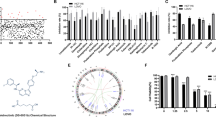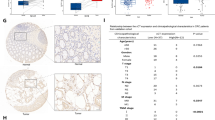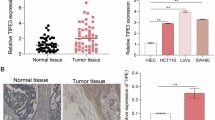Abstract
Aim:
Crotoxin (CrTX) is the primary toxin in South American rattlesnake (Crotalus durissus terrificus) venom, and exhibits antitumor and other pharmacological actions in vivo and in vitro. Here, we investigated the molecular mechanisms of the antitumor action of CrTX in human lung carcinoma cells in vitro.
Methods:
Human lung squamous carcinoma SK-MES-1 cells were tested. The cytotoxicity of CrTX was evaluated in both MTT and colony formation assays. Cell cycle was investigated with flow cytometry. Cell apoptosis was studied with Hoechst 33258 and Annexin V-FITC staining. The levels of relevant proteins were analyzed using Western blot assays.
Results:
CrTX (25, 50, 100 μmol/L) inhibited the growth and colony formation of SK-MES-1 cells in dose- and time-dependent manners. CrTX increased the proportion of S phase cells and dose-dependently induced cell apoptosis, accompanied by down-regulating the expression of proliferating cell nuclear antigen (PCNA), and increasing the level of cleaved caspase-3. Furthermore, CrTX dose-dependently increased the expression of autophagy-related proteins LC3-II and beclin 1, and decreased the level of p62 in the cells. Moreover, CrTX (50 μmol/L) significantly increased p38MAPK phosphorylation in the cells. Pretreatment of the cells with SB203580, a specific inhibitor of p38MAPK, blocked the inhibition of CrTX on cell proliferation, as well as CrTX-induced apoptosis and cleaved caspase-3 expression.
Conclusion:
The p38MAPK signaling pathway mediates CrTX-induced apoptosis and autophagy of human lung carcinoma SK-MES-1 cells in vitro.
Similar content being viewed by others
Log in or create a free account to read this content
Gain free access to this article, as well as selected content from this journal and more on nature.com
or
References
Jemal A, Siegel R, Xu J, Ward E . Cancer statistics. CA Cancer J Clin 2010; 60: 277–300.
Thanyanan R, Saravut JW, Julian RM . Oncogenic pathways, molecularly targeted therapies, and highlighted clinical trials in non-small-cell lung cancer (NSCLC). Clin Lung Cancer 2012; 13: 252–66.
Pereańez JA, Gómez ID, Patińo AC . Relationship between the structure and the enzymatic activity of crotoxin complex and its phospholipase A2 subunit: an in silico approach. J Mol Graph Model 2012; 35: 36–42.
Faure G, Xu H, Saul FA . Crystal structure of crotoxin reveals key residues involved in the stability and toxicity of this potent heterodimeric β-neurotoxin. J Mol Biol 2011; 412: 176–91.
Sampaio SC, Hyslop S, Fontes MR, Prado-Franceschi J, Zambelli VO, Magro AJ, et al. Crotoxin: novel activities for a classic beta-neurotoxin. Toxicon 2010; 55: 1045–60.
Baldi A, Mordoh J, Medrano EE, de Bonaparte YP, de Lustig ES, Rumi L . Special report: studies to determine the possible antitumoral properties of cobra venom and crotoxin complex A and B. Medicina (B Aires) 1988; 48: 337–44.
Corin RE, Viskatis LJ, Vidal JC, Etcheverry MA . Cytotoxicity of crotoxin on murine erythroleukemia cells in vitro. Invest New Drugs 1993; 11: 11–5.
Newman RA, Vidal JC, Viskatis LJ, Johnson J, Etcheverry MA . VRCTC-310, a novel compound of purified animal toxin separates antitumor efficacy from neurotoxicity. Invest New Drugs 1993; 11: 151–9.
Rudd CJ, Viskatis LJ, Vidal JC, Etcheverry MA . In vitro comparison of cytotoxic effects of crotoxin against three human tumors and a normal human epidermal keratinocyte cell line. Invest New Drugs 1994; 12: 183–4.
Donato NJ, Martin CA, Perez M, Newman RA, Vidal JC, Etcheverry MA . Regulation of epidermal growth factor receptor activity by crotoxin, a snake venom phospholipase A2 toxin. A novel growth inhibitory mechanism. Biochem Pharmacol 1996; 51: 1535–43.
Cura JE, Blanzaco DP, Brisson C, Cura MA, Cabrol R, Larrateguy L, et al. Phase I and pharmacokinetics study of crotoxin (cytotoxic PLA2, NSC-624244) in patients with advanced cancer. Clin Cancer Res 2002; 8: 1033–41.
Yan CH, Liang ZQ, Gu ZL, Yang YP, Reid P, Qin ZH . Contributions of autophagic and apoptotic mechanisms to CrTX-induced death of K562 cells. Toxicon 2006; 47: 521–30.
He JK, Wu XS, Wang Y, Han R, Qin ZH, Xie Y . Growth inhibitory effects and molecular mechanisms of crotoxin treatment in esophageal Eca-109 cells and transplanted tumors in nude mice. Acta Pharmacol Sin 2012; 34: 295–300.
Johnson GL, Lapadat R . Mitogen-activated protein kinase pathways mediated by ERK, JNK, and p38 protein kinases. Science 2002; 298: 1911–2.
Junttila MR, Li SP, Westermarck J . Phosphatase-mediated crosstalk between MAPK signaling pathways in the regulation of cell survival. FASEB J 2008; 22: 954–65.
Zarubin T, Han J . Activation and signaling of the p38 MAP kinase pathway. Cell Res 2005; 15: 11–8.
Wagner EF, Nebreda AR . Signal integration by JNK and p38 MAPK pathways in cancer development. Nat Rev Cancer 2009; 9: 537–49.
Zhan Y, Gong K, Chen C, Wang H, Li W . P38 MAP kinase functions as a switch in MS-275-induced reactive oxygen species-dependent autophagy and apoptosis in human colon cancer cells. Free Radic Biol Med 2012; 53: 532–43.
de la Cruz-Morcillo MA, Valero ML, Callejas-Valera JL, Arias-González L, Melgar-Rojas P, Galán-Moya EM, et al. P38MAPK is a major determinant of the balance between apoptosis and autophagy triggered by 5-fluorouracil: implication in resistance. Oncogene 2012; 31: 1073–85.
Wang Y, Sun LG, Xia CH, Ye LP, Wang B . P38MAPK regulates caspase-3 by binding to caspase-3 in nucleus of human hepatoma Bel-7402 cells during anti-Fas antibody- and actinomycin D-induced apoptosis. Biomed Pharmacother 2009; 63: 343–50.
Bradham C, McClay DR . p38 MAPK in development and cancer. Cell Cycle 2006; 5: 824–8.
Choi CH, Jung YK, Oh SH . Autophagy induction by capsaicin in malignant human breast cells is modulated by p38 and extracellular signal-regulated mitogen-activated protein kinases and retards cell death by suppressing endoplasmic reticulum stress-mediated apoptosis. Mol Pharmacol 2010; 78: 114–25.
Neoh CA, Wang RY, Din ZH, Su JH, Chen YK, Tsai FJ, et al. Induction of apoptosis by sinulariolide from soft coral through mitochondrial-related and p38 MAPK pathways on human bladder carcinoma cells. Mar Drugs 2012; 10: 2893–911.
Ye B, Xie Y, Qin ZH, Wu JC, Han R, He JK . Anti-tumor activity of CrTX in human lung adenocarcinoma cell line A549. Acta Pharmacol Sin 2011; 32: 1397–401.
Wang JH, Xie Y, Wu JC, Han R, Reid PF, Qin ZH, et al. Crotoxin enhances the antitumor activity of gefinitib (Iressa) in SK-MES-1 human lung squamous carcinoma cells. Oncol Rep 2012; 27: 1341–7.
Chaabane W, User SD, El-Gazzah M, Jaksik R, Sajjadi E, Rzeszowska-Wolny J, et al. Autophagy, apoptosis, mitoptosis and necrosis: interdependence between those pathways and effects on cancer. Arch Immunol Ther Exp (Warsz) 2013; 61: 43–58.
Wong RS . Apoptosis in cancer: from pathogenesis to treatment. J Exp Clin Cancer Res 2011; 30: 1–14.
Lozy F, Karantza V . Autophagy and cancer cell metabolism. Semin Cell Dev Biol 2012; 23: 395–401.
Choi KS . Autophagy and cancer. Exp Mol Med 2012; 44: 109–20.
Mizushima N, Levine B . Autophagy in mammalian development and differentiation. Nat Cell Biol 2010; 12: 823–30.
Mizushima N . Autophagy: process and function. Genes Dev 2007; 21: 2861–73.
Proikas-Cezanne T, Codogno P . Beclin 1 or not Beclin 1. Autophagy 2011; 7: 671–2.
Bjørkøy G, Lamark T, Pankiv S, Øvervatn A, Brech A, Johansen T . Monitoring autophagic degradation of p62/SQSTM1. Methods Enzymol 2009; 452: 181–97.
Pedersen IM, Buhl AM, Klausen P, Geisler CH, Jurlander J . The chimeric anti-CD20 antibody rituximab induces apoptosis in B-cell chronic lymphocytic leukemia cells through a p38 mitogen activated protein-kinase-dependent mechanism. Blood 2002; 99: 1314–9.
Tang G, Yue Z, Talloczy Z, Hagemann T, Cho W, Messing A, et al. Autophagy induced by Alexander disease-mutant GFAP accumulation is regulated by p38/MAPK and mTOR signaling pathways. Hum Mol Genet 2008; 17: 1540–55.
Liu B, Cheng Y, Zhang B, Bian HJ, Bao JK . Polygonatum cyrtonema lectin induces apoptosis and autophagy in human melanoma A375 cells through a mitochondria-mediated ROS-p38-p53 pathway. Cancer Lett 2009; 275: 54–60.
Wang Y, Sun LG, Xia CH, Ye LP, Wang B . P38MAPK regulates caspase-3 by binding to caspase-3 in nucleus of human hepatoma Bel-7402 cells during anti-Fas antibody- and actinomycin D-induced apoptosis. Biomed Pharmacother 2009; 63: 343–50.
Acknowledgements
This study was funded by the project of the Priority Academic Program Development of Jiangsu Higher Education Institutions (PAPD) and Suzhou Science and Technology Plan Projects in 2012 (No SYS201205).
Author information
Authors and Affiliations
Corresponding author
Rights and permissions
About this article
Cite this article
Han, R., Liang, H., Qin, Zh. et al. Crotoxin induces apoptosis and autophagy in human lung carcinoma cells in vitro via activation of the p38MAPK signaling pathway. Acta Pharmacol Sin 35, 1323–1332 (2014). https://doi.org/10.1038/aps.2014.62
Received:
Accepted:
Published:
Issue date:
DOI: https://doi.org/10.1038/aps.2014.62
Keywords
This article is cited by
-
Targeting PI3K/AKT/mTOR-mediated autophagy for tumor therapy
Applied Microbiology and Biotechnology (2020)



